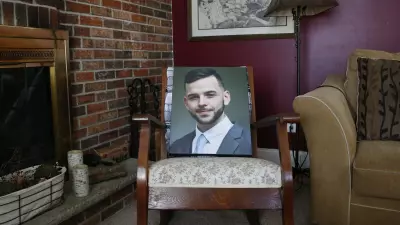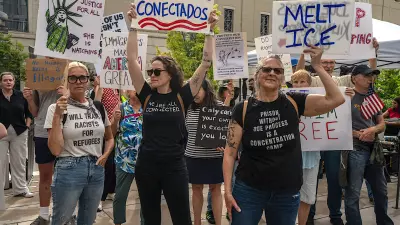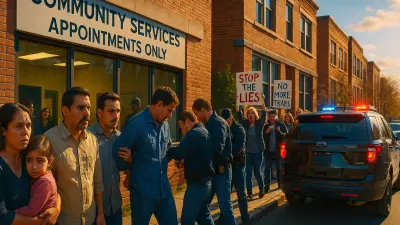BENSALEM — Tyler Cordeiro slept on a couch outside his mother’s Bucks County home, suffering from opioid withdrawal. His sister took a photo of his mother, Susan Ousterman, on the other section of the L-shaped sofa, resting with him, the two lying nearly head-to-head.

Those days in September 2020 were exhausting and desperate for the family. The 24-year-old Cordeiro struggled with addiction for several years, and he had recently lost access to Medicaid insurance coverage. Ousterman and her daughter, Mary Cordeiro, called every 800-number and helpline they could find to help pay for addiction treatment.
It was, they said, a maddening process: Call one number. Don’t get help. Call another. Get redirected back to the same worker who couldn’t help before.
“It was hours of just talking to the same people, not getting an answer,” Mary Cordeiro said.
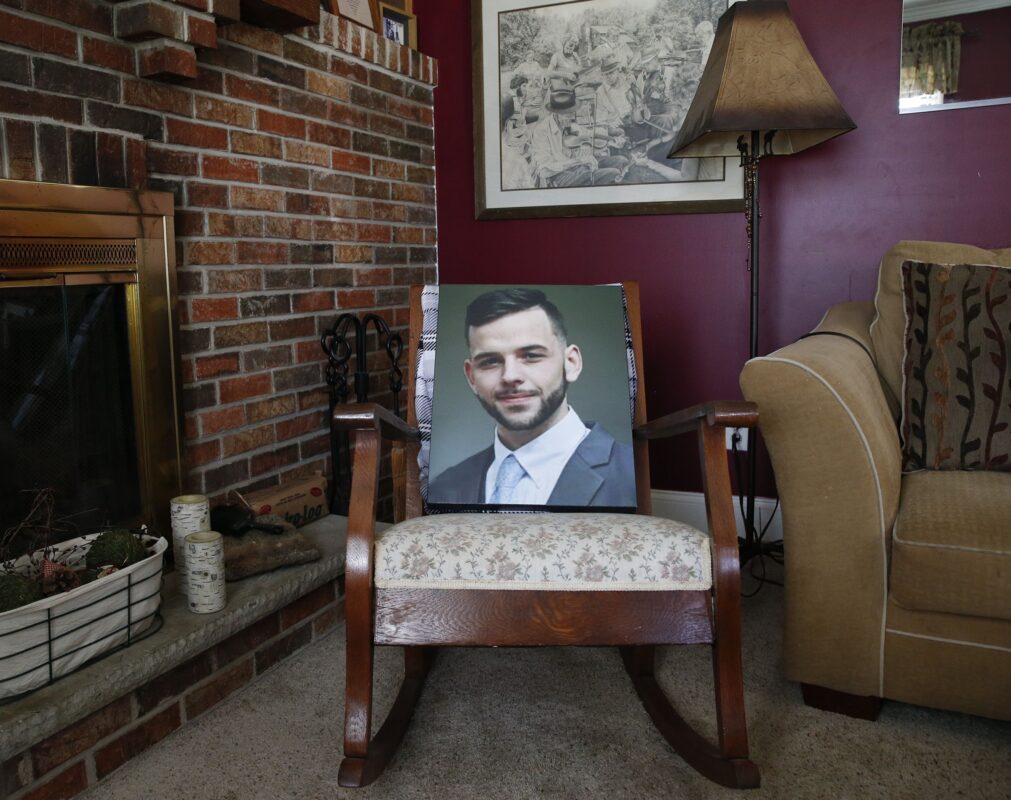
Pennsylvania has a system set up specifically to help people in Tyler Cordeiro’s predicament. A website for the state’s “Get Help Now” campaign highlights a TV ad, which notes it was paid for with Pennsylvania taxpayer dollars, that promises trained workers will “get you or your loved one into treatment, regardless of your access to insurance.”
But Ousterman and Mary Cordeiro said they ran into an unexpected barrier for funding: Tyler Cordeiro’s medical marijuana card.
The federal government sends billions of dollars to states to help them respond to the opioid crisis and serve people suffering from addiction. In Pennsylvania, the state’s Department of Drug and Alcohol Programs sends a large share of the hundreds of millions of dollars it receives each year to a network of 47 county drug and alcohol offices, which in turn help pay for addiction treatment for people who don’t have insurance.
In late 2019, a wrench got thrown into that system. The federal Substance Abuse and Mental Health Services Administration told grant recipients that “funds may not be used, directly or indirectly, to purchase, prescribe, or provide marijuana or treatment using marijuana.”
The agency also warned that the money could not be provided to any person or organization that “permits marijuana use for the purposes of treating substance use or mental disorders.”
But the ban wasn’t as wide-reaching as it seemed.
The federal agency said it tried to clear up confusion in January 2020, sending an email to all State Opioid Response grant recipients, including the Pennsylvania Department of Drug and Alcohol Programs, with a message: Providers could still treat people who used medical marijuana for substance use or mental health disorders.
But a Spotlight PA investigation has found many county drug and alcohol offices in Pennsylvania continued operating as if they couldn’t spend federal money to serve those card-holders, and the state apparently didn’t send out anything to clear up the confusion.
In September 2020 — nearly nine months after SAMHSA said it had sent out the updated guidance — Ousterman and Mary Cordeiro ran into the medical marijuana prohibition. At the time, Ousterman thought the rule was ridiculous, but she was desperate and didn’t have much time to think about it.
She and Mary kept searching. A few weeks later, on Oct. 5, 2020, Tyler walked from his mom’s Bensalem home to a nearby gas station, went into the bathroom, and overdosed. Police tried to revive him with naloxone, paramedics treated him, but he was declared dead after arriving at a hospital, according to medical records and the death certificate.
“That kind of changed something in me — where I realized that not only am I going to die, but I have people that, you know, care about me and love me, and it’s not just about me.” — Tyler Cordeiro
The full scope of harm caused by the confusion between the federal government and state agencies — and the subsequent failure by Pennsylvania to clarify the issue with local officials — is unclear. But what is clear is that those missteps had serious consequences in the case of Tyler Cordeiro.
The prohibition on using federal money to help those using medical marijuana for substance use or mental health disorders was widespread across many of Pennsylvania’s drug and alcohol offices, according to Michele Denk, executive director of the Pennsylvania Association of County Drug and Alcohol Administrators.
“That was a pretty uniform understanding,” Denk said.
It wasn’t until this month — after Susan Ousterman reached out to state officials with concerns about medical marijuana rules — that the Department of Drug and Alcohol Programs sent out a public information bulletin that explained the more lenient rules.
The department didn’t directly explain why it did not share the guidance sooner, but department spokesperson Ali Gantz referred to the January 2020 email from the federal agency as “informal.” A spokesperson for the Substance Abuse and Mental Health Services Administration said the federal agency considered the January 2020 email to be an official and formal communication.
Even now, it’s unclear if county drug and alcohol offices across the state will make changes to how they fund treatment in response to the revised guidance.
“It seems like one hand is not talking to the other,” said Jeff Riedy, executive director of Lehigh Valley NORML, which advocates for the legalization of recreational marijuana for adults.
Tyler Cordeiro was one of the more than 4,700 people who died from a drug overdose in Pennsylvania last year, according to preliminary estimates. His case shows how people at perilous points in their lives can be negatively affected by the conflict and confusion that exists as states expand access to marijuana, while the federal government still discourages its use.
Take, for example, the Wolf administration’s own mixed-messaging. In May 2018, the Pennsylvania Department of Health announced it had added opioid-use disorder as one of the conditions that can qualify someone for medical marijuana. At the time, the Wolf administration said Pennsylvania was the first state to take such an action.
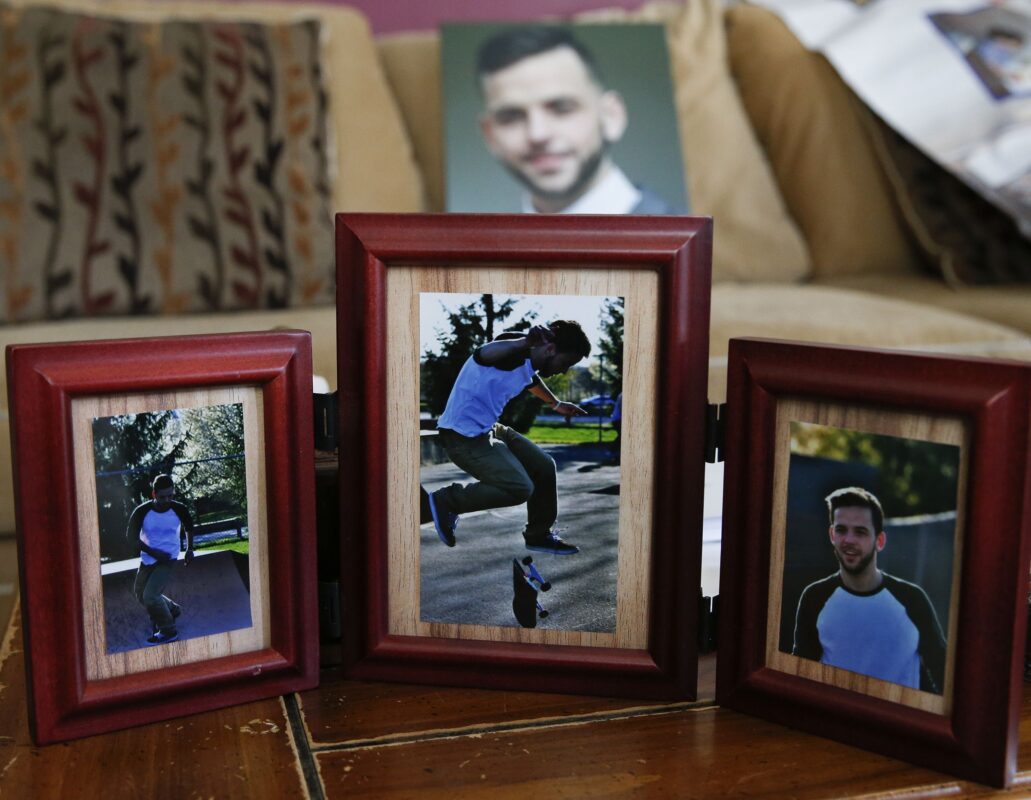
And yet that new access set up the potential for those in need to later be denied help.
Approximately $369 million of the Department of Drug and Alcohol Programs’ $431 million budget this fiscal year comes from federal money. And the department has routinely warned county drug and alcohol offices that they will lose some of their money if they don’t strictly enforce bans on marijuana use.
Denk, of the Pennsylvania Association of County Drug and Alcohol Administrators, acknowledged the situation “has been kind of frustrating all the way around.” But she said drug and alcohol offices try to get people into treatment multiple ways, including by using local money, though it’s not clear how often that occurred for people with medical marijuana cards.
She also did not know how many people have been denied treatment funding based on their use of medical marijuana.
What is clear: Federal money is a major funding source. Local drug and alcohol offices were provided $102 million in federal money this fiscal year, according to documents from the Department of Drug and Alcohol Programs. That’s more than double the state dollars available to them.
In Tyler Cordeiro’s case, Ousterman said no one told her or Mary Cordeiro that county drug and alcohol offices could provide funding from other sources. And his mother and sister said Tyler Cordeiro wasn’t given the choice to receive funding by giving up his medical marijuana card — which Ousterman says he offered.
“You’d hand over anything to be able to get help. It’s so desperate,” she said. “I can’t express how desperate that time is, when you know he’s ready for help.”
Ousterman doesn’t understand why the federal warning was ever interpreted to deny treatment money to someone with a medical marijuana card. She is still concerned state officials and county drug and alcohol offices haven’t done enough to clear up confusion — or acknowledge that anything went wrong in the first place. She gets upset whenever she sees or hears one of the state’s “Get Help” ads, and she worries that others won’t get the care they need.
‘Angelic look,’ ‘no fear’
When Tyler Cordeiro was about 9 years old, he stuck his tongue to a pole on a cold day — like that kid in the movie “A Christmas Story.” He was an adventurous spirit, the first one to jump into a bay to see how deep the water was, his mother said.
“He had no fear,” Ousterman said. “He really didn’t, which could have been part of the problem.”
In a documentary released more than a year before his death, Tyler Cordeiro said his struggles with addiction started as a teenager. Pills and cocaine, he said, led to heroin, getting hooked, and more problems: a car crash, months of living homeless in Philadelphia, an overdose.
“That kind of changed something in me — where I realized that not only am I going to die,” Tyler Cordeiro said, “but I have people that, you know, care about me and love me, and it’s not just about me.”
Tyler Cordeiro spoke while sitting on a bed inside a recovery home. He had a short beard and neatly combed hair. He wore a loose-fitting plaid shirt.
He had an “angelic look,” said Steve McWilliams, an instructor at Villanova University and one of the documentary’s producers.
“We all thought he was the perfect representation of, one, success, because he was being successful when we interviewed him,” McWilliams said, “and also just his innocence.”
Tyler Cordeiro had a brief relapse in summer 2019, and then went into treatment, his mother said. But he started using again in early 2020, and it felt like chaos: multiple visits to detox facilities and rehabs, failed attempts to not use drugs, stretches of disappearing.
He had surgery in June 2020 for endocarditis, a life-threatening inflammation of the heart’s inner lining. But he still struggled to not use drugs.
Medicaid suspended
And then, in August 2020, he spent nearly two weeks in the Bucks County Correctional Facility in connection to a 2019 drug paraphernalia conviction, according to a county spokesperson.
That time in jail led him to lose access to benefits under Medicaid, a joint state and federal program primarily for people with low income.
That’s a common experience, according to the National Association of Counties, which has advocated for changes to the federal policy that cuts off Medicaid benefits for county jail inmates even if they haven’t been convicted of a crime. A joint task force report from the organization and the National Sheriffs’ Association said federal policy creates hardships for people suffering from behavioral, mental, or substance use issues when they leave jail.
“With little to no continuity of care services being provided, these individuals will often fall into old habits and end up back in jail,” the joint task force said in the February 2020 report.
Pennsylvania is one of the states that suspends Medicaid benefits — instead of terminating them — after someone is sent to county jail. That approach makes it easier for people to regain coverage, but there can still be gaps.
A letter dated Aug. 12 from the state Department of Human Services to Tyler Cordeiro notes that his Medicaid benefits were suspended, and that he had until Sept. 11 to formally contest the decision. But Ousterman said the letter was mailed to her house, and Tyler Cordeiro wasn’t living there at the time. They didn’t realize his Medicaid was suspended until after he relapsed again and sought treatment in mid-September, she said.
Even though his Medicaid was suspended, Tyler Cordeiro knew that county drug and alcohol offices could help fill in coverage gaps, Ousterman said. But he told his mother that during an assessment at a Bucks County office of addiction treatment provider Gaudenzia, he learned that his medical marijuana card made him ineligible for that funding assistance.
Gaudenzia would not comment about Tyler Cordeiro specifically, citing privacy rules.
But Patricia McKernan, chief of staff for the addiction treatment provider that operates in more than a dozen Pennsylvania counties, said Gaudenzia wants to provide access to everyone who needs care, and pursues a variety of options, including helping them enroll in Medicaid.
“It seems like one hand is not talking to the other.” — Jeff Riedy, executive director of Lehigh Valley NORML, which advocates for the legalization of recreational marijuana for adults
McKernan said Gaudenzia does not deny treatment to clients who use medical marijuana. But she said Gaudenzia officials believed county drug and alcohol offices could not use federal Substance Abuse and Mental Health Services Administration money to cover addiction treatment if the person had a medical marijuana card for certain conditions.
“So it put us in a little bit of a bind,” McKernan said.
In Bucks County, the executive director of the drug and alcohol office declined an interview request and didn’t address specific questions about the organization’s funding practices.
“Our priority is to ensure residents have access to services, via eligible funding guidelines, and if/when those guidelines change, our department follows DDAP direction,” Diane Rosati, of the Bucks County Drug and Alcohol Commission, said in an email.
The funding problems led Ousterman and Mary Cordeiro to make dozens of calls seeking assistance in mid-September, while Tyler Cordeiro went through withdrawal in Ousterman’s backyard. He stayed outside, as the mother and son tried to balance ongoing concerns over supporting his recovery and enabling his drug use. They worked to get his Medicaid reinstated, and were asked to provide documents about income and proof of prison release. They tried to navigate the system without insurance. But Ousterman said they ran into problems. Someone Tyler Cordeiro knew from recovery found him a “scholarship” for an inpatient detox and treatment facility in New Jersey, but his lack of insurance created problems when he got there, Ousterman said.
In another case, she said, a promised inpatient rehab center turned out to be a sober house with minimal supervision. He relapsed again.
Tyler Cordeiro came back to Ousterman’s Bensalem home. They had pizza and talked about options. He said he didn’t get any pleasure from using drugs but felt like it was beyond his control. He walked to a gas station to buy cigarettes. When he didn’t return after about 45 minutes, she drove around the neighborhood to look for him.
Eventually, she decided to speak with a gas station worker. She arrived at about the same time as the ambulance for her son.
New guidance
After Tyler Cordeiro’s death, letters arrived for him from the Pennsylvania Department of Human Services. One was dated Oct. 6, 2020 — the day after he died. The letter told him he qualified for Medicaid, and the change was retroactive, going back to early September.
“He would have been covered!” Ousterman wrote at the bottom.
On average, about 14,200 people in Pennsylvania have their Medicaid benefits suspended each year because they are incarcerated, according to the state Department of Human Services.
People sent to county jail still can lose Medicaid access in Pennsylvania. But the Department of Human Services says it implemented a change in late September 2020 that could lead to fewer suspensions. In the new system, there’s a 15-day delay before the department is formally notified that someone is incarcerated in county jail. That gives people more time to be released without having their benefits suspended.
While the Medicaid rules were difficult to navigate, Ousterman has focused her energy since her son’s death on the medical marijuana issue and the funding from county drug and alcohol offices.
She reached out to state officials with the state Department of Drug and Alcohol Programs multiple times earlier this year.
On June 2, the department sent out an informational bulletin with the subject line “Clarification on special conditions for federal funding related to medical marijuana.” The bulletin included a two-page document from the Substance Abuse and Mental Health Services Administration. That federal letter was dated Jan. 1, 2020. The guidance noted looser rules for medical marijuana funding — rules that reduce barriers for people seeking addiction treatment.
Denk, of the Pennsylvania Association of County Drug and Alcohol Administrators, and McKernan, of Gaudenzia, said they had not seen that updated federal guidance prior to June 2021. McKernan said the guidance opens up another opportunity to assist clients. Denk said her members will review and discuss the guidance to see if, and how, it will change their practices.
“I think we’re glad that we finally saw somebody put something in writing,” Denk said.
Spotlight PA reached out to leaders of drug and alcohol offices in more than a dozen counties about the SAMHSA guidance. Most didn’t respond or declined to answer questions. But the executive director of Berks County’s office said the guidance allows providers to spend federal funds to treat medical marijuana users. But they have to agree to conditions, including working toward alternative treatments, said Stanley J. Papademetriou.

It’s not clear why the Department of Drug and Alcohol Programs didn’t share the guidance earlier through public policy or information bulletins. The department’s fiscal and operations manuals, which took effect in July 2020 and which county drug and alcohol offices follow, contain the stricter medical marijuana prohibitions, without noting the clarification from the federal government.
The department said it encouraged providers and county drug and alcohol offices “to seek guidance directly from SAMHSA on these special conditions, as DDAP does not have the authority to interpret federal guidance.”
But county drug and alcohol offices did turn to DDAP for guidance, according to Denk, of the Pennsylvania Association of County Drug and Alcohol Administrators.
“Our members discussed this language several times at meetings with DDAP. Their legal counsel also responded to inquiries from individual counties,” Denk said in an email, after an earlier phone interview.
In statements to Spotlight PA, the Department of Drug and Alcohol Programs acknowledged receiving the January 2020 clarification guidance from the Substance Abuse and Mental Health Services Administration, but it did not provide details on how it shared that guidance with county drug and alcohol offices prior to June of this year.
The department’s statements to Spotlight PA did not acknowledge Ousterman’s role in bringing attention to the issue. Instead, the department said, “it was decided that there may be further clarification needed” after numerous conversations.
The department said it then reached out to SAMHSA “to request that an official communication be compiled to share information in a more formal way.” The department said it sent out the June 2021 bulletin after receiving information “on a formal SAMHSA letterhead.”
The state also defended its “Get Help Now” campaign, saying more than 76,000 Pennsylvanians have called the hotline since 2016. And the department said, “the Wolf Administration is committed to providing high-quality drug and alcohol treatment services to all Pennsylvanians living with a substance use disorder, without discrimination or prejudices.”
Ousterman continues to raise awareness around addiction issues and treatment. She hopes to create memorial gardens to honor children who have died. And she continues to grieve for her son. There are reminders of him all over her home.
A school district calendar features Tyler Cordeiro on the cover, wearing a band uniform and carrying a drum. Framed photos from Ousterman’s wedding in 2019 show him walking her down the aisle, the two dancing together, and leaning in to each other. There’s a figurine that reminds Ousterman of the Christmas when her son wrapped the present in about 30 zip ties, making it nearly impossible to open. She keeps his old notebooks, including one with a journal entry from a week or so before his fatal overdose.
“You are going to have a family and kids and be trustworthy,” he wrote. “This is not going to be a letter that your mom reads when you die.”
But, of course, she did.
“It’s hard because,” Ousterman said, her voice choking up, “it’d be easier to think he didn’t want to live.”
WHILE YOU’RE HERE… If you learned something from this story, pay it forward and become a member of Spotlight PA so someone else can in the future at spotlightpa.org/donate. Spotlight PA is funded by foundations and readers like you who are committed to accountability journalism that gets results.

